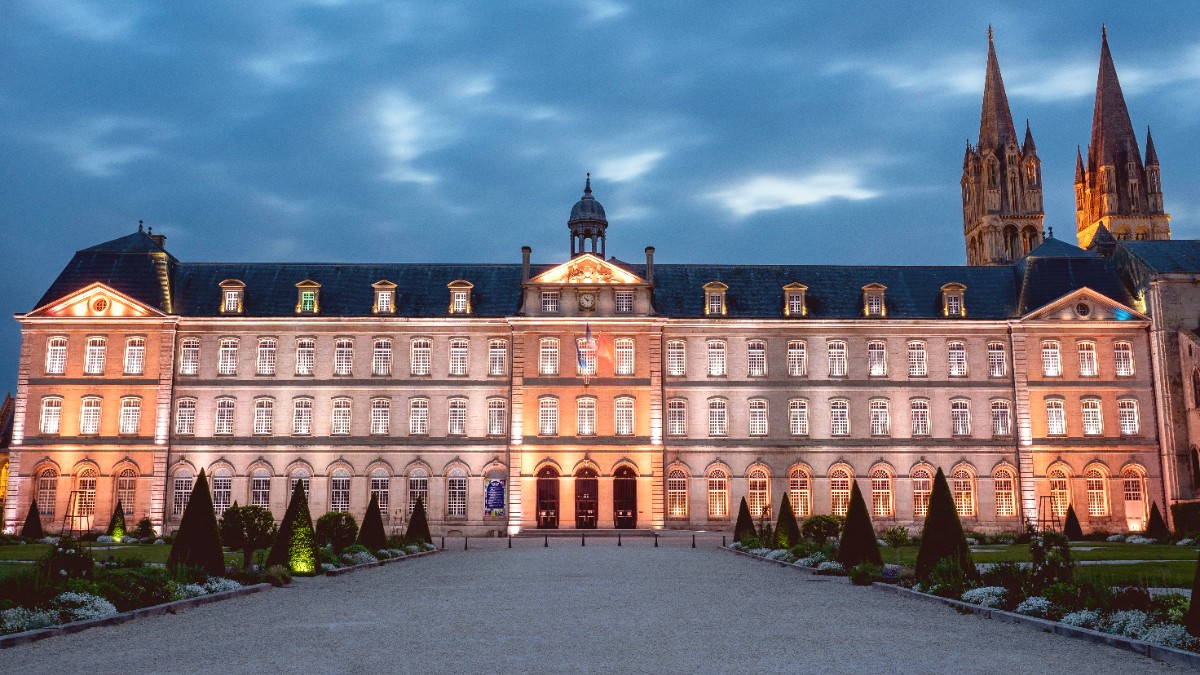
Normandy, France
It feels like stepping into a living history book, where every stone and street corner is a story. The city greets those who seek both quiet reflection and active discovery. You find a place where powerful historical events exist alongside a thriving university town, offering a welcoming atmosphere for all who visit. Travelers leave Caen not just with photos, but with an understanding of human spirit and the passage of time.
Caen is a position in northwestern France, serving as the prefecture of the Calvados department within the Normandy region. It sits on the Orne River, a waterway that meanders through the city before reaching the English Channel. The river's path links Caen to the coast, approximately 15 kilometers (9 miles) away, at the port of Ouistreham. This location brought Caen historical advantages, making it a strategic hub for trade and defense throughout centuries. The river and its connecting canal offer a visible link to the sea, shaping the city's development.
Rolling green fields, apple orchards, and dairy farms define the Norman countryside, presenting the local produce that forms the base of the region's famous cuisine. Caen acts as a gateway to this broader landscape. From the city, travelers can easily reach the D-Day landing beaches to the north, the picturesque Pays d'Auge to the east, and the rugged "Suisse Normande" (Norman Switzerland) to the south. The city's geography presents both urban exploration and access to diverse natural and historical surroundings, positioning it as a convenient base for wider regional discovery.
Caen's historical narrative is long and impactful, deeply tied to figures who shaped European history. Its origins trace back to Roman times, but the city’s prominence began in the 11th century. William the Conqueror, Duke of Normandy and later King of England, chose Caen as his ducal capital. This choice transformed Caen into a powerful center, where William commissioned the construction of major architectural works. The Château de Caen, a vast medieval fortress, and two grand Romanesque abbeys—Abbaye aux Hommes and Abbaye aux Dames—are enduring testaments to his reign. William’s vision solidified Caen's place as a religious, political, and cultural force in the medieval era. The city flourished through the Middle Ages, developing a rich heritage that is still visible in its surviving ancient quarters and churches.
The 20th century brought a different, profound chapter to Caen's history. During World War II, the city became a central battleground in the pivotal Battle of Normandy. Operation Charnwood in July 1944, part of the Allied effort to liberate the city, resulted in extensive destruction. Allied bombing and fierce ground fighting devastated much of Caen, erasing centuries of its urban fabric. The reconstruction that followed was a monumental effort, shaping the modern cityscape you see today. This period of destruction and rebirth deeply influences Caen's identity. It fostered a spirit of resilience and a commitment to peace, qualities reflected in the world-renowned Mémorial de Caen (Museum for Peace).
Today, Caen serves as a pivotal gateway for understanding the D-Day landings and the broader Battle of Normandy.
The city’s history extends beyond ancient kings; it speaks of human courage, sacrifice, and the enduring quest for a better future.
Visitors find themselves immersed in a layered history, where medieval stone walls stand near reconstructed buildings.
The echoes of war blend with messages of reconciliation.
This historical depth transforms a visit to Caen into an experience that informs and inspires.
The Mémorial de Caen museum is a prominent institution dedicated to the history of the 20th century, with a particular focus on World War II, the D-Day landings, and the Battle of Normandy. It delves into the causes and consequences of war, offering perspectives on conflict resolution and peace. The museum features extensive exhibits, historical artifacts, films, and testimonies, guiding visitors through pivotal moments from the Treaty of Versailles to the Cold War. It promotes reflection on historical events and their ongoing relevance. The Mémorial serves as an important educational and commemorative site.
Visit the Mémorial de Caen early in your trip. This museum sets a context for the historical sites you will explore throughout the city and region.
A visit to the Mémorial before other sites deepens appreciation for Caen's layered history and its journey from destruction to rebirth.
The city’s elevation is low, generally flat along the riverbanks, but with gentle rises that offer views of the urban landscape. This geographical setting brings a practical base for exploring significant historical sites, while also enjoying the natural beauty of the region.
Caen presents a compact yet comprehensive experience for any traveler. It caters to those with a deep interest in history, specifically the medieval period and World War II. It also welcomes individuals seeking a genuine taste of Norman culture and cuisine. The city itself is walkable, with its main attractions clustered around the historic center. You find a balanced mix of grand historical landmarks and lively modern amenities, including shops, restaurants, and a thriving student population.
Caen suits independent travelers, history enthusiasts, and families. It presents a comfortable pace of travel, allowing for thoughtful exploration without the hurried rush of larger cities. Accommodation options vary from budget-friendly hostels to mid-range hotels and charming guesthouses. Getting around is simple, with an efficient public transport system and pedestrian-friendly areas. This city offers a destination where history feels alive, and local charm is abundant, creating a memorable journey for all who visit.
Explore William the Conqueror's castle, the magnificent abbeys, and the powerful Mémorial de Caen.
Discover charming old quarters, enjoy local markets, and engage with the city's artistic venues.
Savor authentic Norman dishes featuring apples, cider, seafood, and rich dairy products.
Caen serves as an ideal launchpad for day trips. From here, you access the D-Day beaches, Bayeux, Honfleur, and even the iconic Mont Saint-Michel. Its central location in Normandy places many regional attractions within easy reach for day excursions.